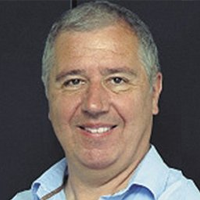Spectrum efficiency: Broadcast
Two goals of broadcast spectrum efficiency
The broadcasting sector has seen a huge amount of change when it comes to the spectrum it uses over the past decade. As countries reallocate spectrum to free up bands for telecoms uses, the broadcast industry has been forced to adapt and move to different bands. Not only this, but at the same time the industry has had to explore what the future of over the air broadcasting looks like. As steps are made when it comes to high-definition broadcasting and customers are starting to have greater expectations when it comes to the advanced features that broadcasters can deliver, progress is more important than ever.
So where does spectrum efficiency fit in. It fits in in two main ways. Firstly, as broadcasters occupy a smaller range of frequency bands with different activity on adjoining channels minimizing interference is key. Secondly, they have the job of delivering the advanced network features that their customers demand, being able to offer these features within the parameters of their new, smaller spectrum allocation is a key challenge being faced by broadcasters.
Minimizing interference
Let’s look first at the interference issue. Broadcast interference causes disruption in what is being transmitted over the air. Broadcasters need to ensure that adjacent channels do not cause problems for neighboring channels. This is where Mask Filter Systems are essential. In order to allow every ounce of utility to be squeezed out of available spectrum and maximize efficiency, Mask Filter systems aim to eliminate interference with neighboring channels and ensure smooth service for both broadcasters and their customers.
An example of this in action is with our recent project atop the One World Trade Centre. In addition to our transmission equipment, we also installed highly selective 12 pole mask filters for one broadcaster to protect users in adjacent frequency bands and ensure optimum performance. As the need for spectrum increases across every industry, being able to implement systems that enable efficient usage will be more important than ever.
Doing more with less
As we said the challenges with spectrum efficiency in the broadcast industry is twofold. In addition to minimizing interference, it is also crucial for broadcasters to use the spectrum they have to deliver Next Generation features.
They must achieve the tall order of doing more with less. As an example, let’s look at the equipment we used as part of the Brazil broadcast trials to see exactly how and why broadcasters need to use efficiency driven technology. Systems using multiple polarizations in conjunction with advanced transmission standards that incorporate MIMO, allow broadcasters to increase the capacity for program content. This is perfect to support next generation broadcasting use cases, for example delivering 4K or 8K content. The addition of channel bonding, that will also be tested during the trials, further increases capacity to a factor approaching four times the traditional capacity. This type of system allows broadcasters to deliver advanced content in the most spectrum efficient way, and to make the most of the assets they have, while providing customers with a premium service.
Conclusion
Maximizing efficiency is a universal problem for all those in the business of spectrum. Demand is constantly increasing for what is ultimately a finite resource. Due to spectrum re-farming and the resulting shrinkage in spectrum resources in the industry, broadcasters have a head start when it comes to identifying how to work as efficiently as possible without it impacting innovation. By working with RF experts who fully appreciate both how to expand the services being offered and ensure there is no negative impact from neighbouring channels broadcasters can maximize efficiency and maximizie the services offered to customers, allowing them to have their cake and eat it.
About the author
Nick Wymant
Global Product Manager Broadcast


